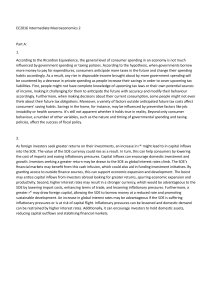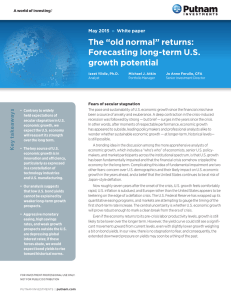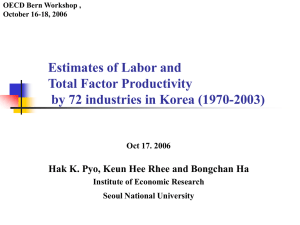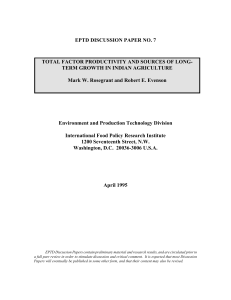RIETI policy symposium, on 26 2006
advertisement
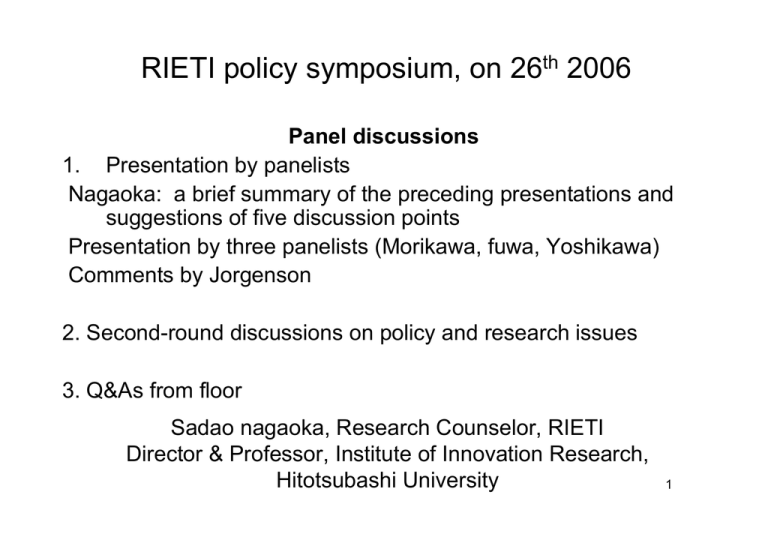
RIETI policy symposium, on 26th 2006 Panel discussions 1. Presentation by panelists Nagaoka: a brief summary of the preceding presentations and suggestions of five discussion points Presentation by three panelists (Morikawa, fuwa, Yoshikawa) Comments by Jorgenson 2. Second-round discussions on policy and research issues 3. Q&As from floor Sadao nagaoka, Research Counselor, RIETI Director & Professor, Institute of Innovation Research, Hitotsubashi University 1 I. A brief summary of the preceding presentations 1. Miyagawa and Fukao on the sources of productivity growth in Japan Improving productivity performance in Japan will require broad based approach, covering mobility of the firm (active entry of new firms), efficient utilization of IT for service innovation, and human capital accumulation. 2 2. Jorgenson on world economic growth • Acceleration of growth from 1995 on • Increasing importance of IT for the productivity growth in developed economies Almost half of TFP growth and capital deepening in US and Japan • Japan’ TFP growth does not look poorly, relative to the US in recent years 3 3. Motohasi on international comparison of sectoral productivity performance • Recent productivity performance of the Japanese manufacturing sector has lagged behind that of the USA, while Korean, Taiwanese and Mainland Chinese manufacturing sectors have made rapid catch-up. • Significant productivity differentials in favor of US in construction, electricity, finance $ insurance and services. 4 4. Timmer on growth and productivity in EU • The EU’s productivity performance has lagged behind from that of the US in the recent decade. From convergence to divergence. • Importance of market service industries as a source of such productivity performance differential. Low TFP growth and low accumulation of IT capital in EU. 5 II. Some focal issues 1. Future of productivity effects of IT technology • • • If the Moor’ law would prevail in the future, the productivity contribution of IT would further increase in the future. However, increasing R&D cost burden relative to the size of the market and potential saturation of the advanced economies’ market Potential international collaboration for R&D Expanding the market through product innovations and more diffusion of IT products in the developing countries 6 Market size vs. R&D for semiconductor 250 Billion $ 16% 14% Global semiconductor sales R&D/sales ratio of Intel 200 12% 10% 150 8% 100 6% 4% 50 2% 0 0% 2005 2004 2003 2002 2001 2000 1999 1998 1997 1996 1995 1994 1993 1992 1991 1990 1989 1988 1987 1986 Data from WSTS and Intel 7 2. Mechanism of productivity growth of service and regulated industries. • Why does international productivity differential persist for a long time? Why IT is less used compared to the US? Is it related to low TFP growth? • Variety of causes depending on sub sectors: -Design of regulation and procurement, -Evaluation issues of service quality and the breadth of menu -Underdevelopment of “solution business in Japan, which undertakes complementary innovation. 8 3. Transition from catch-up oriented institutions to frontier-oriented institutions • Catch-up oriented institutions would not guarantee the convergence. The forging ahead of the US in 1990s, based on new industry creations • Design of institutions in favor of innovations (IPRs, competition policy encouraging innovation competition, risk capital etc.) 9 4. Incorporating of better assessment of innovation performance into productivity assessment • Assessment of product innovation in manufacturing sector • Service evaluation of medical care and distribution 5. Endogeneity of productivity and important role of macroeconomic policy • Expansion of demand would enhance productivity both by facilitating more efficient use of resources and by encouraging R&D (market and risk capital) • The end of deflation in Japan would be a significant boost of productivity in Japan. 10




